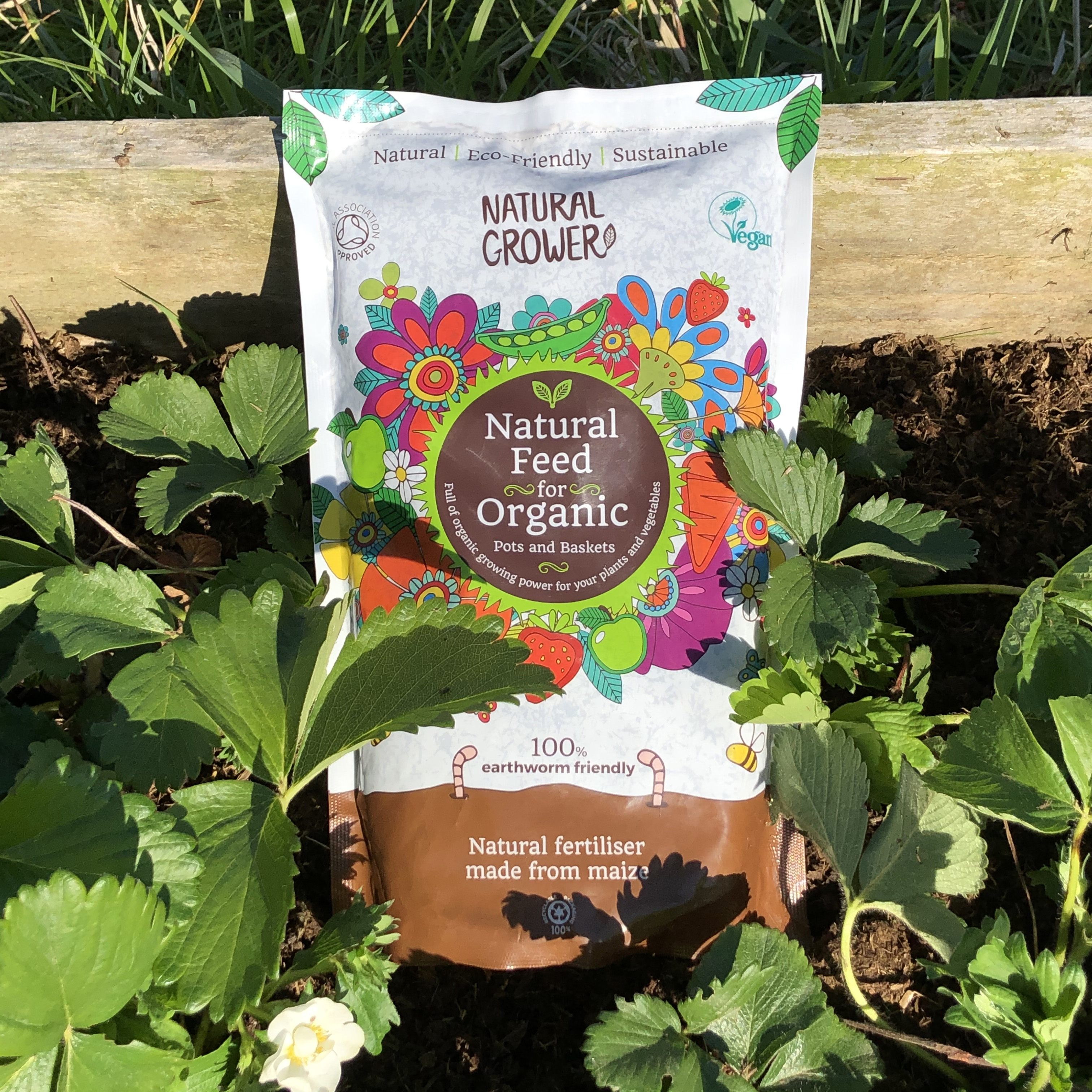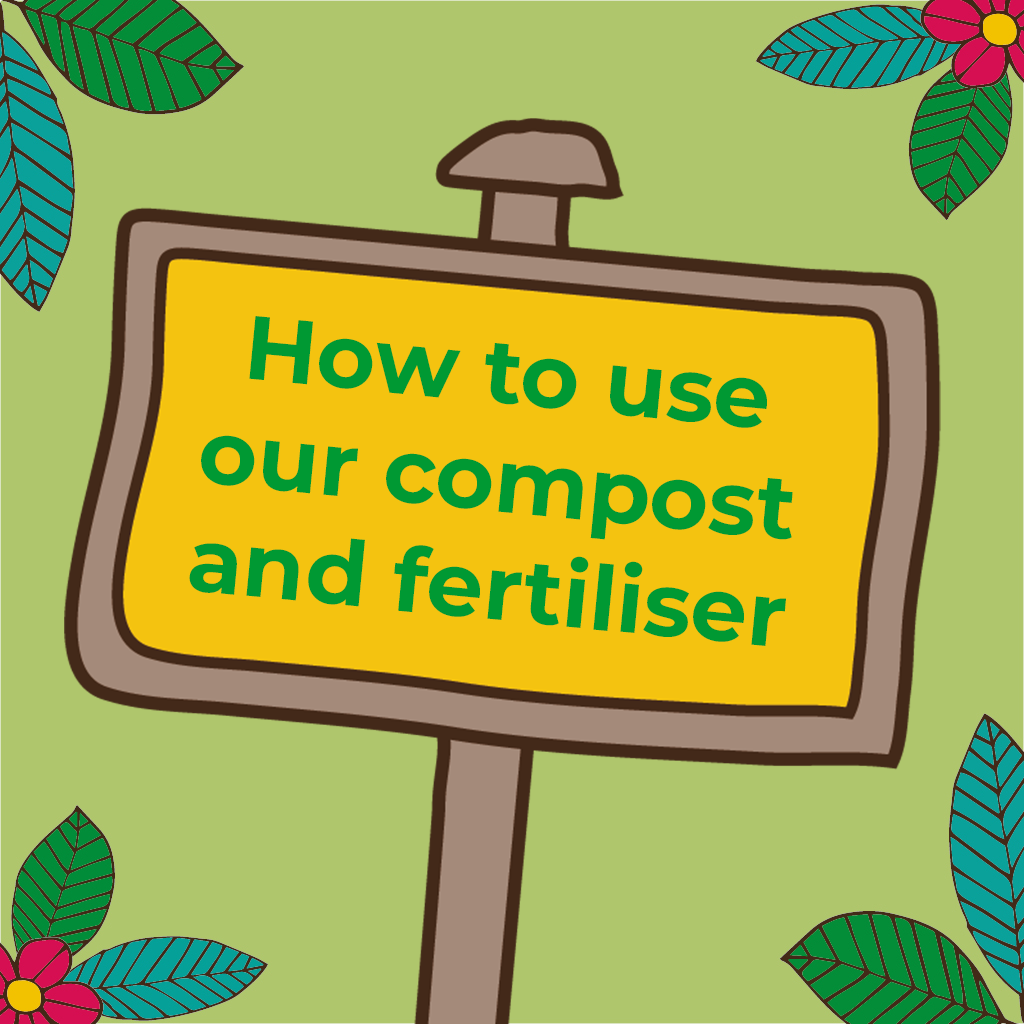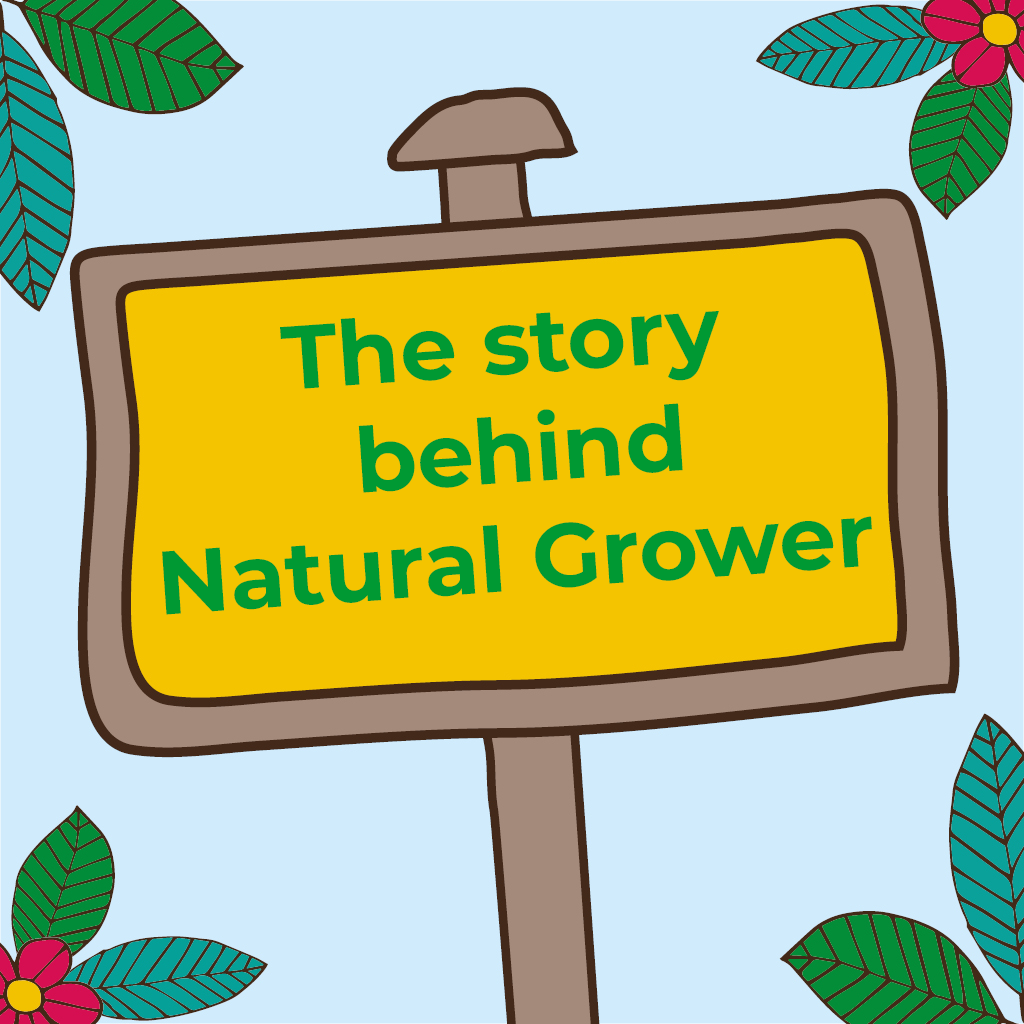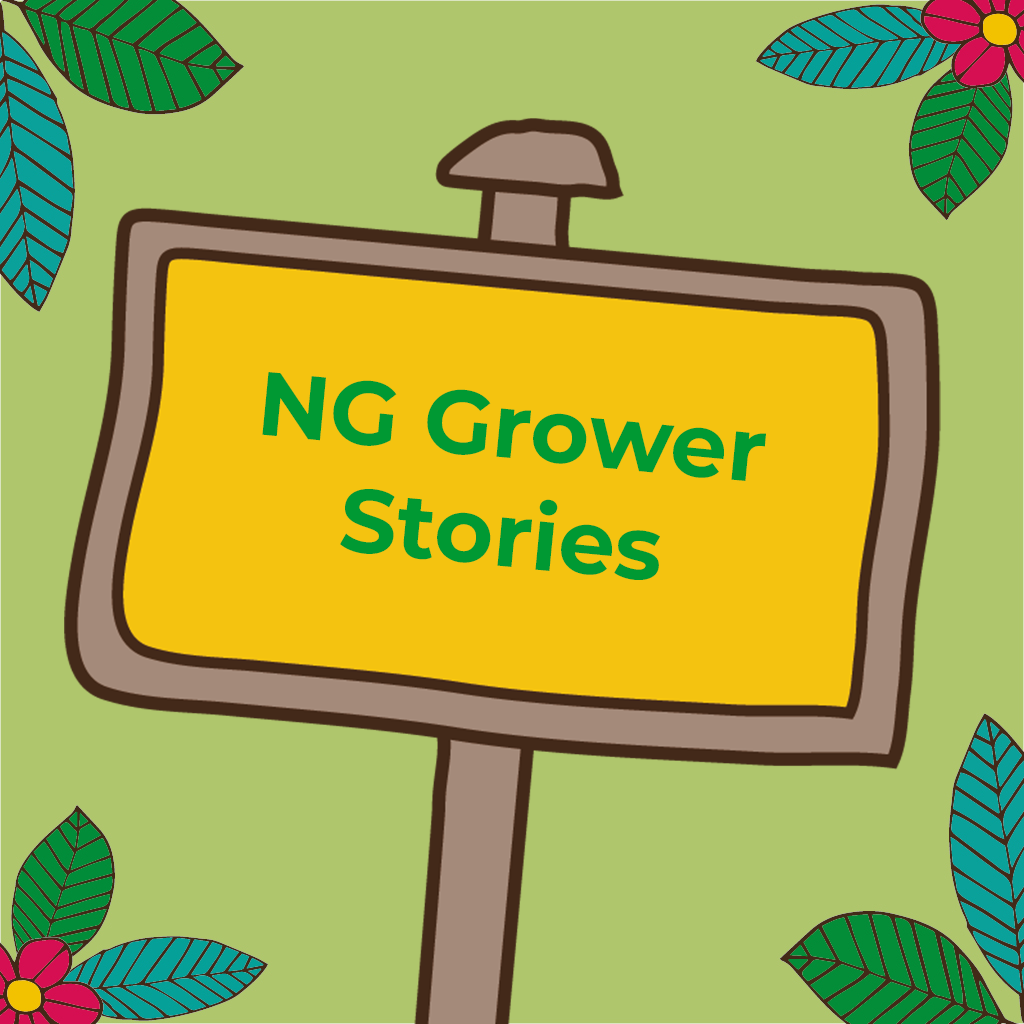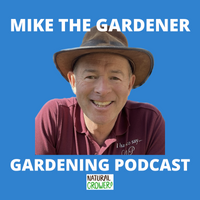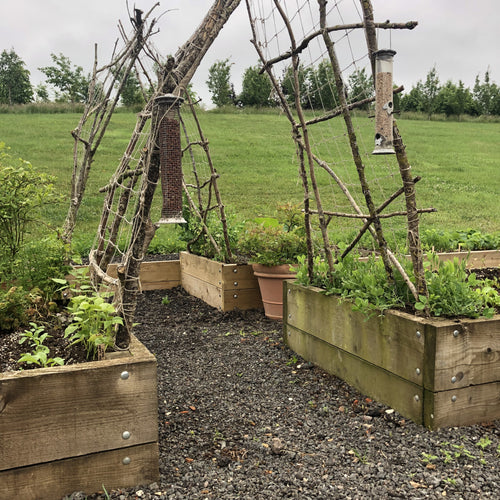
Raised beds offer a practical, fun and efficient way to grow your own vegetables and flowers. If you are planning what you are going to grow in your garden this year, and where you are going to place beds, then there are many reasons why a raised bed is a good idea. From drainage, reducing root rot and preventing soil compaction, to accessibility and warmer soil.
We grow all our home grown vegetables and fruit in raised beds. You can see in the image below two beds that we made with untreated wood and metal supports. 
Raised beds placed and ready to be filled
Benefits of a raised bed:
Better Drainage: Raised beds typically have better drainage compared to traditional in-ground gardens, which can help prevent waterlogging and root rot in plants. They also enable you to grow plants in areas with very poor drainage as the beds are raised above the waterlogged ground.
Warmer Soil: Because they are elevated and have their own microclimate, raised beds tend to warm up faster in the spring, allowing gardeners to start planting earlier in the season.
Reduced Soil Compaction: As the whole bed can easily be reached by hand without standing in it, you can avoid walking on the soil and compacting it. This leads to better drainage, root growth and soil aeration.
Easier Access: The beds can be built at a height that is more comfortable for you to work with, reducing the need for bending or kneeling. This makes planting, weeding, and harvesting easier and more accessible, especially for those with mobility issues.
Pest Control: Raised beds can be easier to protect from pests such as slugs and snails, as well as some ground-dwelling insects.Its easier to create netted frames over raised beds to keep pests out.
Easier Weed Control: The beds can help minimize weed growth, as they provide a clear boundary between the cultivated soil and surrounding areas. This makes it easier to spot and remove weeds.
Attractive: Raised beds can add visual interest to a garden and can be designed in various shapes, sizes, and materials to complement the overall landscape design.
Factors to consider when designing and building a raised bed:
Size: The ideal size for a raised vegetable or flower bed can vary depending on factors such as available space, the types of plants you want to grow, and your personal preferences. However, there are some general guidelines to consider:
- Accessibility: Make sure the bed is narrow enough that you can comfortably reach the centre from both sides without stepping into the bed. A width of 3 to 4 feet (90 cm to 120 cm) is commonly recommended for easy access.
- Length: The length of the bed can vary based on available space and aesthetic preferences. Longer beds can accommodate more plants and offer a larger growing area, so take in to account the plant spacings for the varieties you are planning to grow.
- Height: Raised beds need to be a minimum of 15cm. Ideally you want them to be atleast 30cm (1ft) high to provide enough depth for root growth. The beds can be higher depending on your preference and needs. Taller beds can be easier to work in, especially for those with mobility issues, but they will require more soil and materials.
Spacing: Leave enough space between raised beds for pathways or access. A pathway width of about 2 feet (60 cm) allows enough room for walking and wheelbarrow access.
Location: Consider the orientation of your raised beds in relation to the sun. Place the beds in a location that receives at least 6 to 8 hours of sunlight per day for optimal plant growth. Ensure the location is easily accessible for watering and maintenance.
Drainage: Ensure that the site for your raised bed has good drainage to prevent waterlogging. If necessary, you can add drainage materials such as gravel or sand at the base of the bed.
Materials: Raised beds can be constructed from various materials, including wood (make sure it is untreated wood), bricks, concrete blocks, or recycled materials. Choose a material that is durable, non-toxic, and suitable for outdoor use. You can either make your own beds from scratch or buy flat packed raised beds that can easily be put together. Pallet collars make very good raised beds as you can stack them on top of each other to get the height you require and they are a perfect size measuring 3ft along one side. You can source the collars second-hand or purchase them online via industrial packaging sites. 
Pallet collar as a raised bed in the greenhouse
Soil Mix: Fill the beds with a mixture of organic compost, topsoil, natural feed and soil conditioner and other organic matter. Aim for a loose, well-draining soil mixture that will provide nutrients and support healthy plant growth. Do not fill the beds with just compost, as this will breakdown over time and you will find you are constantly having to top up your beds. A 50/50 mixture of good quality, graded topsoil and organic soil conditioner is an ideal combination for a light, airy structure with a slow release feed.
Maintaining the health of the soil and the ecosystem: Feed your plants throughout the growing season with an organic liquid feed. Use natural methods to deter pests and remove weeds as they appear. Each year continue to add organic matter using organic compost and/or organic soil conditioner in the Autumn and Spring, to feed and support the vital ecosystem that will be thriving in your raised beds. See our article about Soil Health for more ideas on how you can look after your soil to keep it in optimum production and health for years to come.
Enjoy creating your raised vegetable and flower beds and harvesting all your favourite fruits, flowers and vegetables over the summer!
accessibility, drainage, grow your own, pest control, raised beds, root rot, soil compaction, warmer soil, weed control
